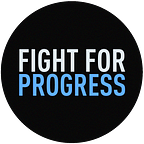What’s the Point? On the economy: Why things may be going well but voters don’t feel it.
John Halpin and Ruy Teixeira
The United States economy grew by an impressive 5.7 percent in 2021 — the fastest one-year surge and best recovery since 1984. After jobs and businesses collapsed during the worst year of the coronavirus pandemic, more than 6 million jobs were added in 2021. Wages overall also increased throughout most of 2021 in conjunction with a tight labor market and the desire to get back to normal after months of lockdowns and restrictions. Investments and stocks also surged in 2021 with 68 different records hit in the S&P 500 index alone.
Objectively, the U.S. economy was humming along quite nicely last year. So why are Americans still so gloomy about the economy? According to Pew Research conducted early in 2022, only 28 percent of Americans rate the national economy as excellent or good. Overall, only one-fifth of Americans report being satisfied with the way things are going in the country — 15 points lower than in 2018 according to Pew trend lines.
Looking at these data, two things stand out — one obvious and the other less so.
- Inflation and high costs are squeezing family budgets.
You don’t get massive economic recovery without some attendant problems. Three rounds of federal stimulus policies, including direct payments to families and support for businesses and state and local governments, helped fuel America’s economy back to life. But they also contributed to the highest inflation in 40 years.
American voters clearly are feeling the effects of rising prices. From the Pew poll, overwhelming “majorities say that prices for food and consumer goods (89 percent) and gas prices (82 percent) are worse than they were a year ago, with more than half saying they are ‘a lot’ worse (60 percent food and consumer goods, 54 percent gas prices).”
Year-end research conducted by the Associated Press/NORC Center for Public Affairs Research also shows the combined effects of stagnant or declining incomes coupled with rising household costs. More than one quarter of Americans say their household income is now lower than it was at the start of the pandemic in March 2020, with another 50 percent saying it’s about the same. Roughly one quarter of Americans say their household income is higher than in March 2020. At the same time, most Americans — 67 percent — say that their household expenses have increased since the start of the pandemic, with around a quarter saying household costs are about the same. Almost no one says their expenses are lower.
So even though many Americans may be feeling okay financially, others are feeling squeezed, and more importantly, a vast majority of Americans do not trust the government to deal well with their economic concerns. Looking at the AP/NORC poll, three-quarters of Americans say they are not at all confident or only slightly confident that the federal government will make progress on important economic issues in the upcoming year.
2. Views of the economy are heavily influenced by partisanship.
While inflation and rising costs provide the most obvious answer for why Americans across the board are gloomy on the economy despite some good overall figures, another factor needs to be explored — the role of partisanship.
Look at this striking chart from FiveThirtyEight showing perceptions of the economy by party identification over a five-year period from Trump to Biden.
Perceptions of the economy changed “wildly” depending on who was in power and who was responding. About 70 percent of Republicans thought the economy was getting worse at the end of the last Obama term. This dropped to below ten percent among Republicans for nearly the entirety of the Trump presidency until the coronavirus collapse. And then pessimism surged back about to nearly 70 percent as soon as Joe Biden took office. Democrats reacted in an inverse manner with sharp optimism under Obama, followed by steadily rising pessimism throughout the Trump years, concluding with a return of optimism under Biden.
If you look at data today, although voters overall are more muted on the economy due to the reasons cited above, Democrats consistently view the economy far more favorably than do Republicans. Independents are likewise tracking more with Republican views on Biden and the economy, thus producing the splits and poor ratings we see today.
What’s the point on the economy?
Voters don’t just give sunny reactions to positive economic indications. Many voters react in understandably negative ways to perceived problems in the economy due to inflation and high costs, while others split in their interpretations of the economy based on who’s in the White House.
This makes it increasingly difficult for any president to garner consistently high or low ratings on the economy based on objective indicators like growth, jobs, and wages.
